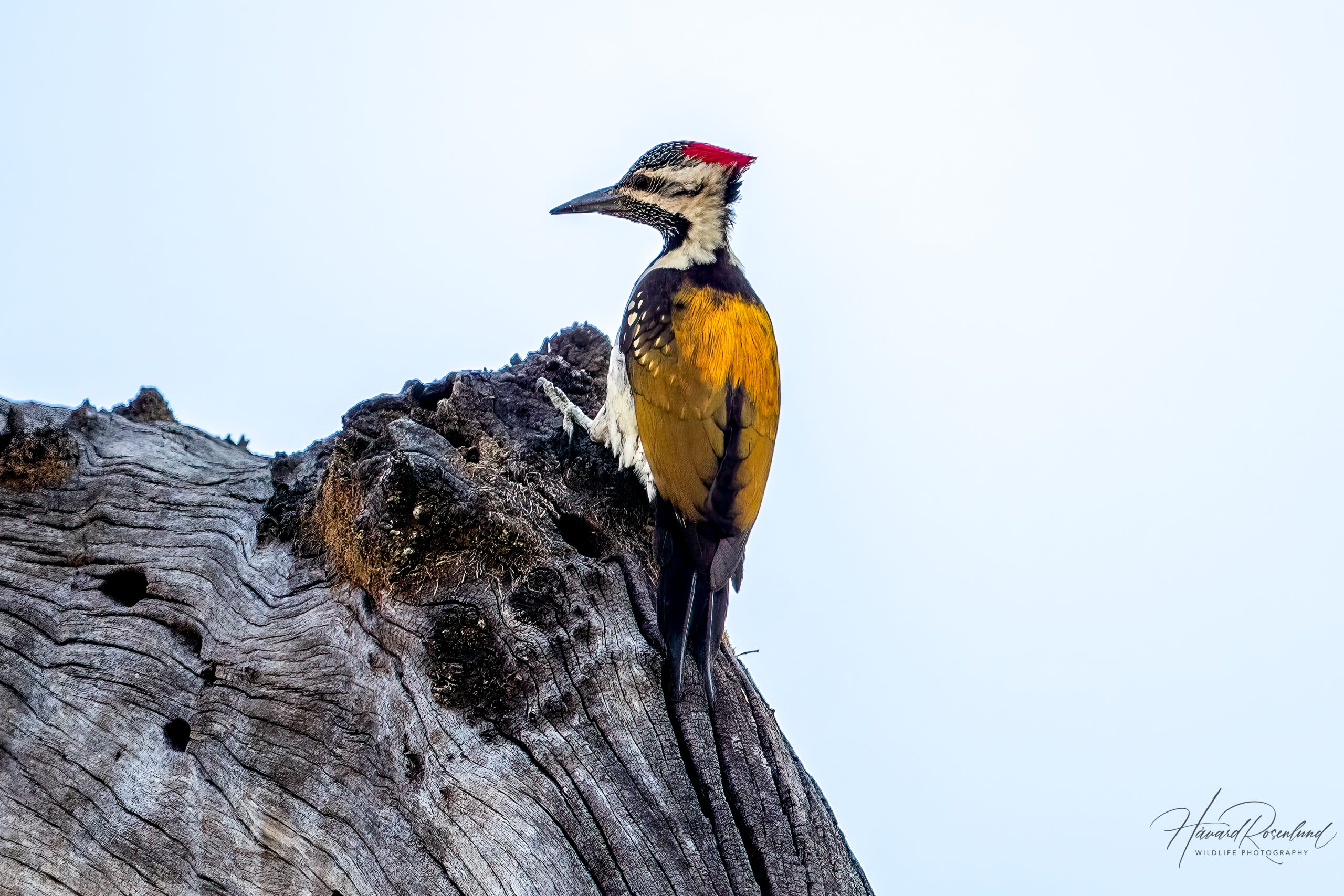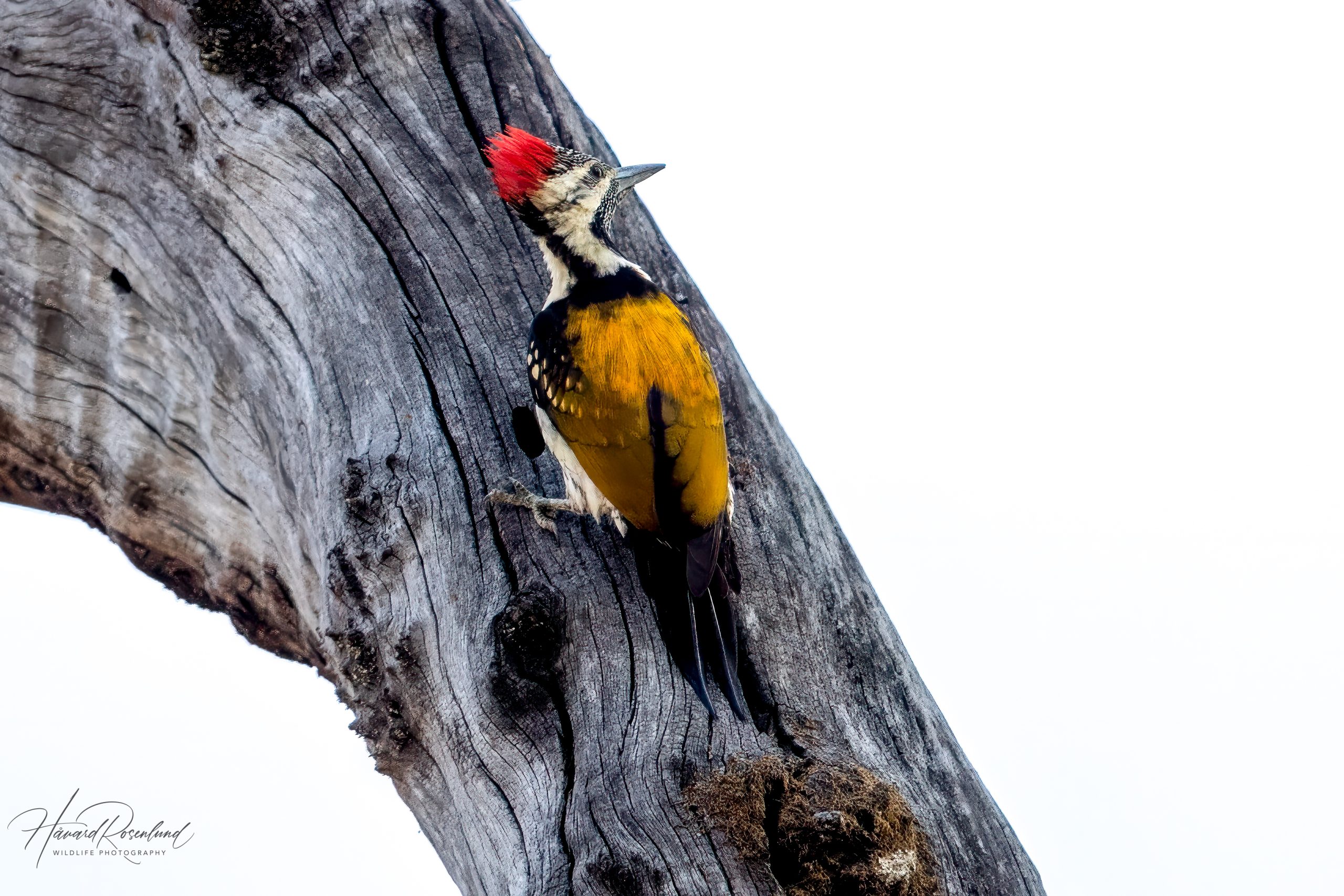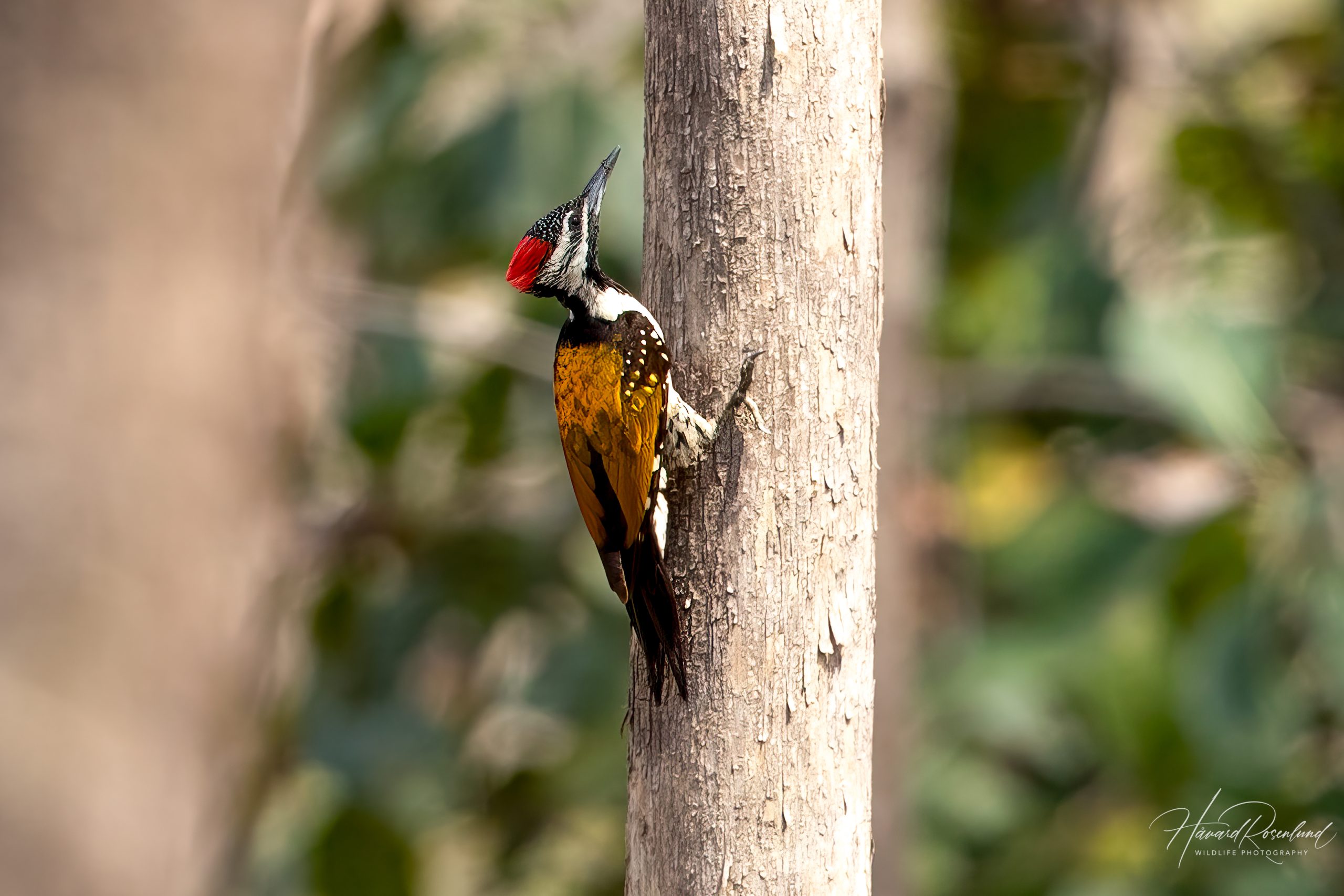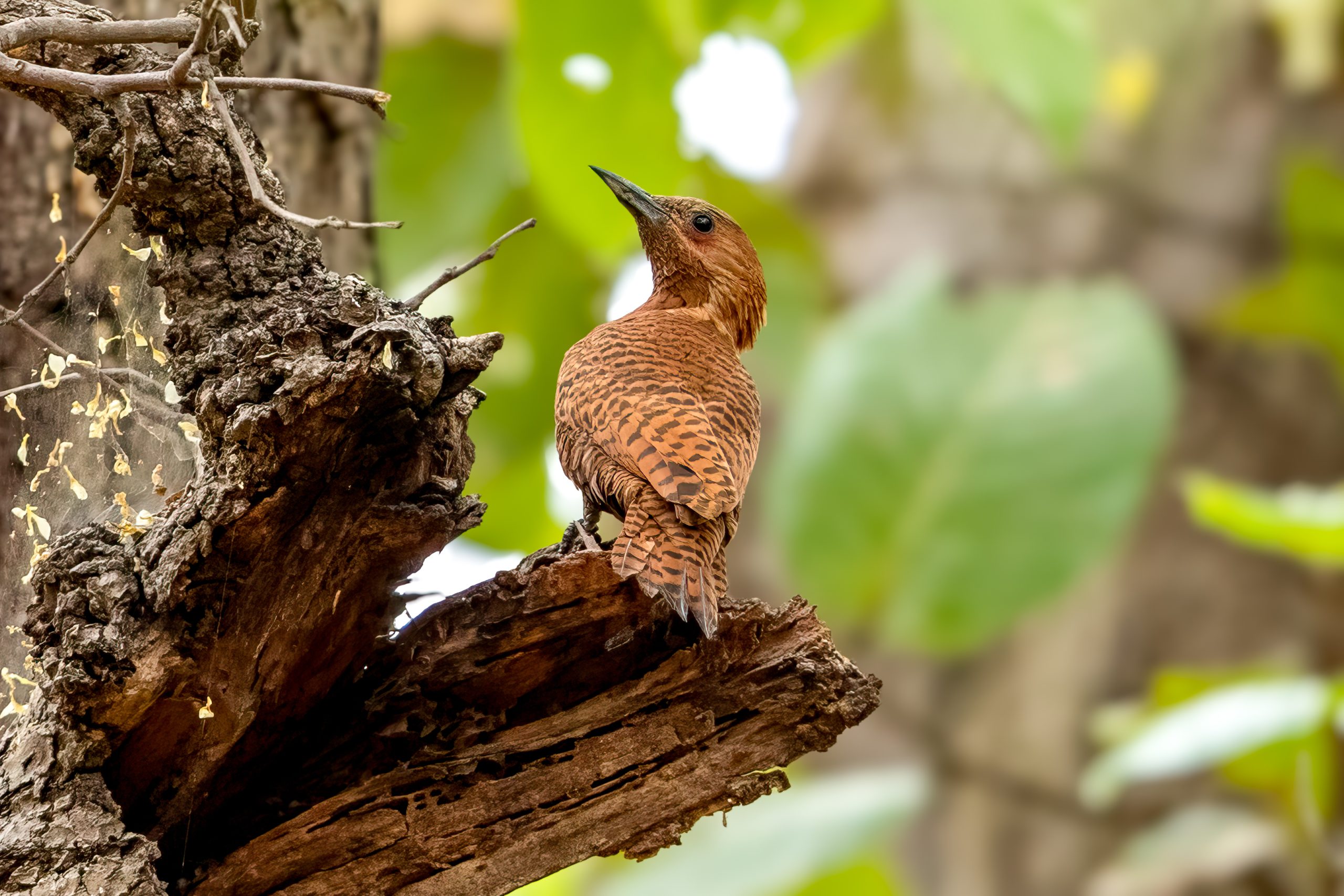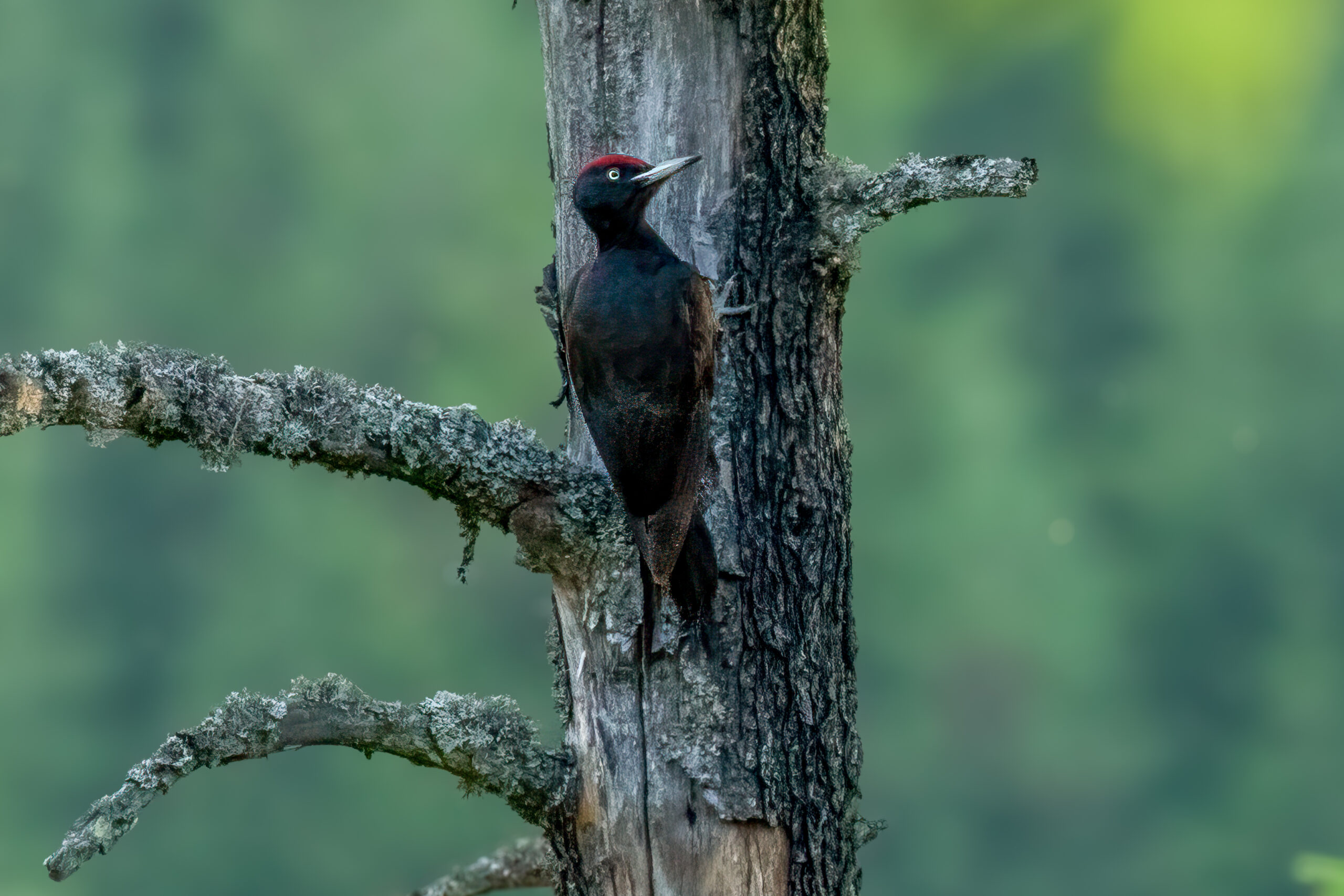Description
The black-rumped flameback (Dinopium benghalense) also known as the lesser golden-backed woodpecker, is a colorful woodpecker native to the Indian subcontinent. It is commonly found in India, Sri Lanka, and other parts of South Asia. This medium-sized woodpecker measures approximately 26-29 cm (10.2-11.4 in) in length. Key identifying features include a golden-yellow back and wings with a distinct black rump. The beak is strong and chisel-like, adapted for drilling into wood. Males possess an all-crimson crown while females are red on their nape. Both sexes have white underparts with black spots and a distinct black throat, which differentiates it from the similar common flameback (Dinopium javanense) that has a white throat.
Diet & habitat
Black-rumped flamebacks inhabit a variety of environments including deciduous forests, plantations, gardens, and even urban areas. They prefer regions with ample tree cover for foraging and nesting. Their diet primarily consists of insects, especially ants and beetles, which they extract from tree bark using their powerful beaks and long, sticky tongues. They also feed on fruits and nectar, displaying an impressive ability to adapt their feeding habits based on available resources.
Nesting
Breeding season for the black-rumped flameback typically occurs from February to July. These woodpeckers are monogamous and engage in cooperative nest-building. They excavate nesting cavities in dead or decaying trees, which provide a safe environment for their eggs. Females usually lay between 2 to 4 white eggs. Both parents share incubation duties, which lasts about 11-15 days. After hatching, the chicks are altricial, meaning they are born blind and helpless. Fledging occurs around 20-25 days after hatching, during which both parents continue to feed and protect the young.
Status
The black-rumped flameback is classified as least concern by the IUCN, and its population is deemed stable. Despite facing threats such as habitat destruction and urbanization, they have shown resilience by adapting to human-modified landscapes.




